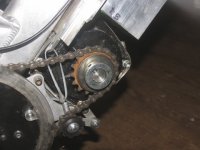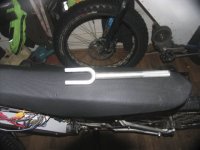DingusMcGee
10 kW
Hey Sather,
I have received the 2 staton 20 mm adapters threaded for a different motor freewheel & cog setup than what Cyclone offers. As I already have an unused ACS 16T freewheel I did not order the high quality, high $$ White freewheel. I see Lightening Rod uses the ACS freewheel and adapter on the jack shaft. Are you trying any version of this setup?
I have received the 2 staton 20 mm adapters threaded for a different motor freewheel & cog setup than what Cyclone offers. As I already have an unused ACS 16T freewheel I did not order the high quality, high $$ White freewheel. I see Lightening Rod uses the ACS freewheel and adapter on the jack shaft. Are you trying any version of this setup?



